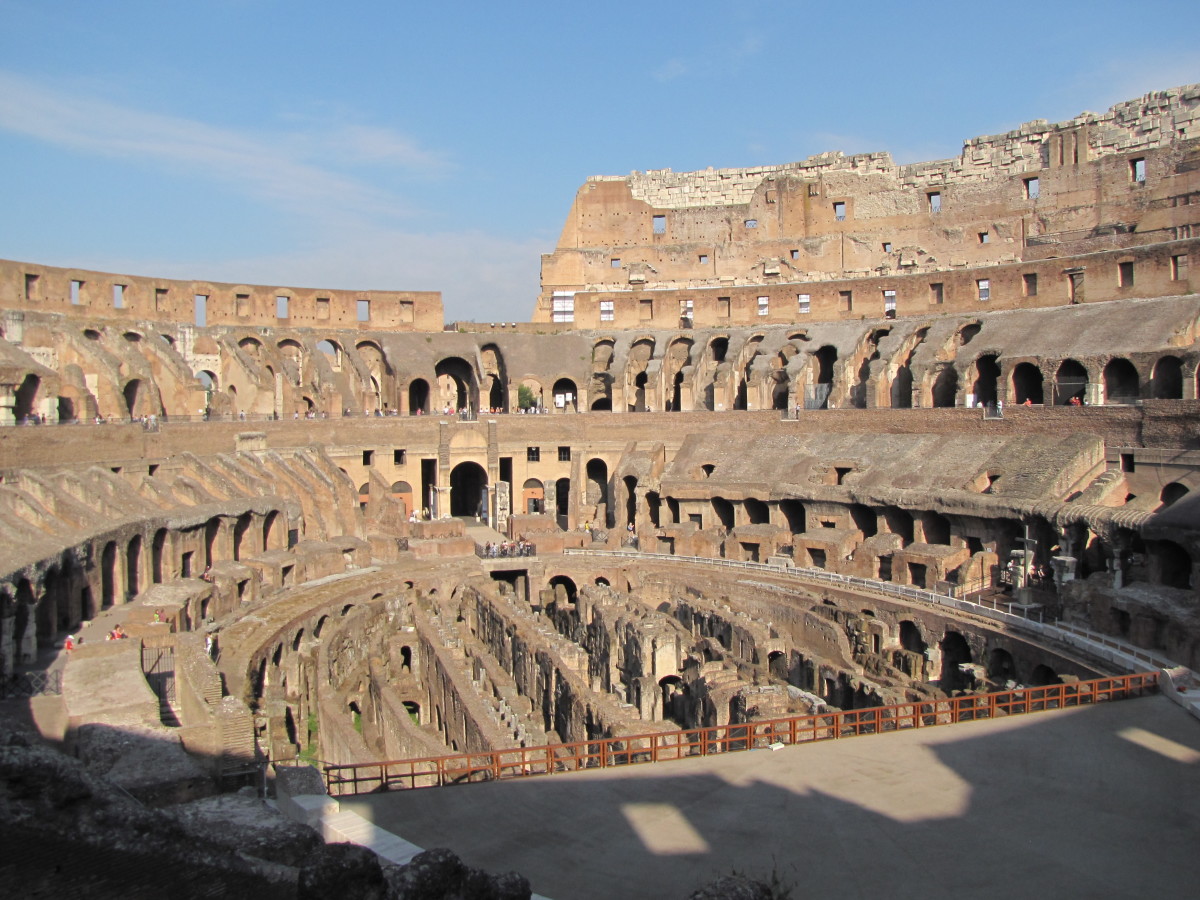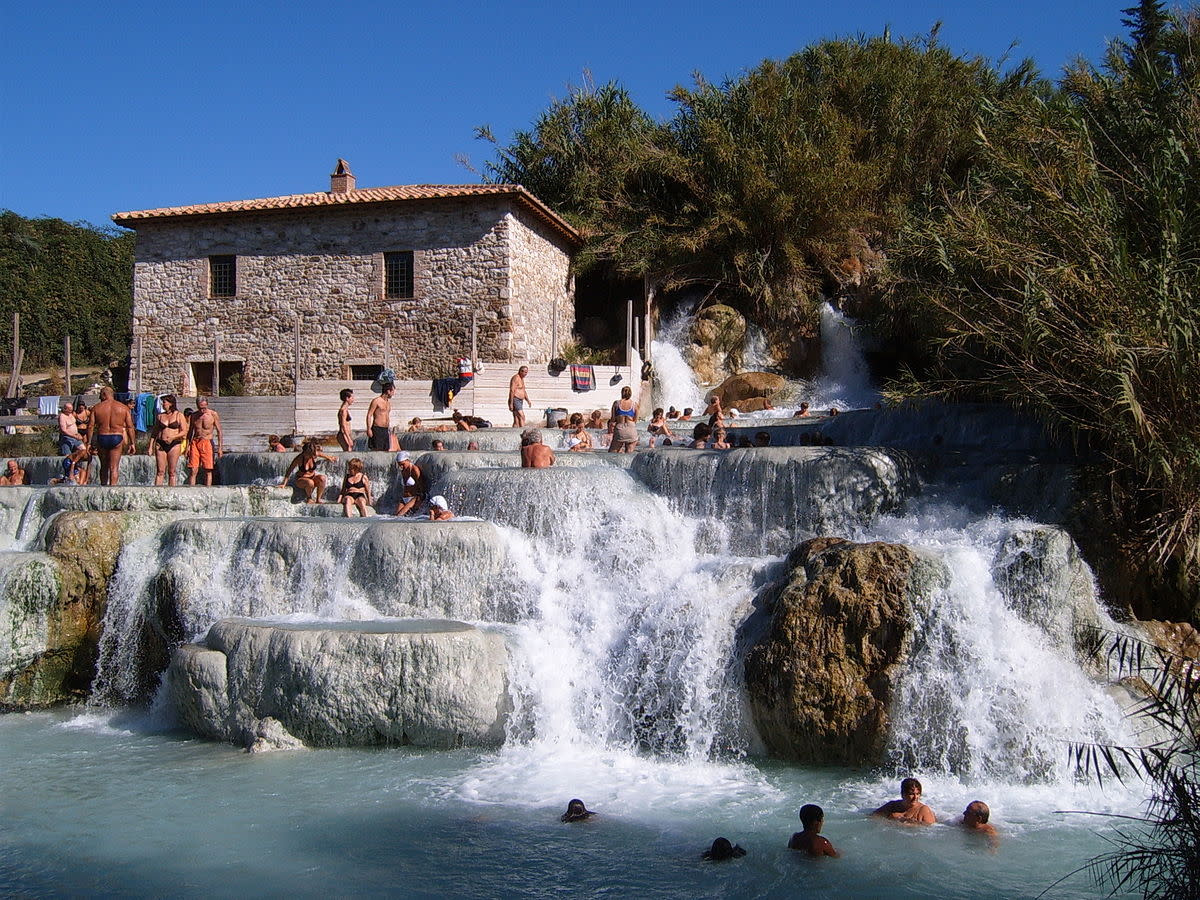Why Did They Build the Colosseum?
il Colosseo
Before the amphitheatre was built, the centre of Rome was densely populated until a severe fire in AD64 which burned for nine days destroying much of the city. After the fire, Emperor Nero, took over the land and built an expansive palace and gardens, fed by an aqueduct, with a huge bronze statue of himself near the entrance, called the Colosseo. The building beside the statue eventually took on the name il Colosseo, even after the statue fell down.
The Colosseum, Rome
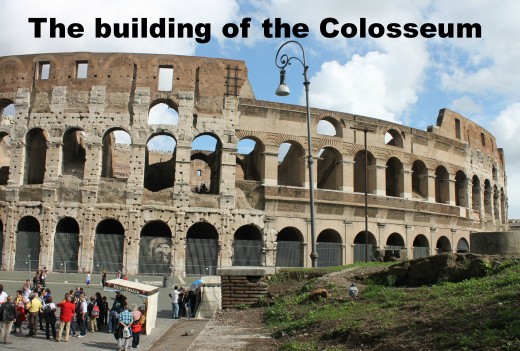
Building
Nero’s successor Emperor Vespasian ordered the amphitheatre to be built on the site of what had been a lake in Nero's palace gardens, to gain political favour with the local people after the excesses of Nero and his court.
Building began in about 70AD and was completed in 80AD under the rule of Titus. The structure is elliptical: measuring189metres long and 156metres wide and had 80 entrances from ground level to enable crowds to enter and leave the building quickly, a design which is still copied by modern entertainment venues. The walls are 46metres high.
An aqueduct which had watered Nero’s gardens was directed into the amphitheatre to provide water for audiences and animals.
Colosseum interior
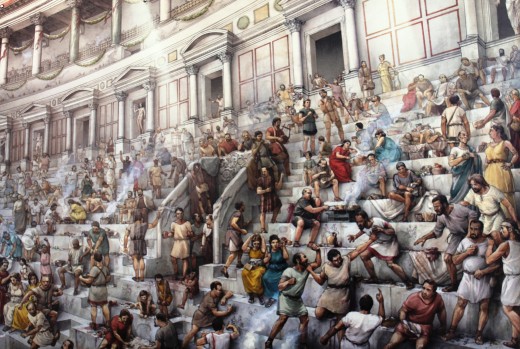
Events
The completed building held 50,000 spectators in tiered seating for gladiatorial sports between people as well as man versus beast. During carnivals thousands of animals a day would be killed in competitions.
The underground stonework was in two levels, housing animals and gladiators awaiting their contests. Wild animals from as far afield as Africa and the Middle East were used.
The stonework was originally covered by a wooden floor which formed the ‘stage’ for sporting and fighting contests, as well as a large pool for water sports and contests.
Traps doors cut into the timber flooring allowed the caged animals and men to be hoisted using elevators and pulleys to lift them onto the stage from below. Elevators and pulleys were also used to raise and lower scenery and props.
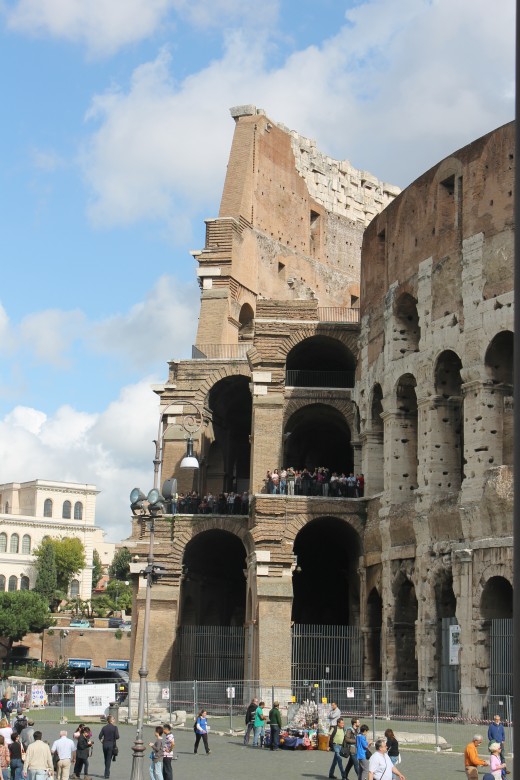
Disrepair
The building was damaged in subsequent centuries by fires in AD217 and earthquakes, in AD443 and 1349.
It fell into disuse as an arena and was used as housing, a fortified castle and ransacked for marble and stone for use on other buildings. Bronze clamps that had held the stones in place were hacked from the stones leaving jagged hollows in many of the stones.
In the 1700s the building was consecrated as a sacred site because of the large number of Christians who had been martyred there, although this is now disputed.
Socrates
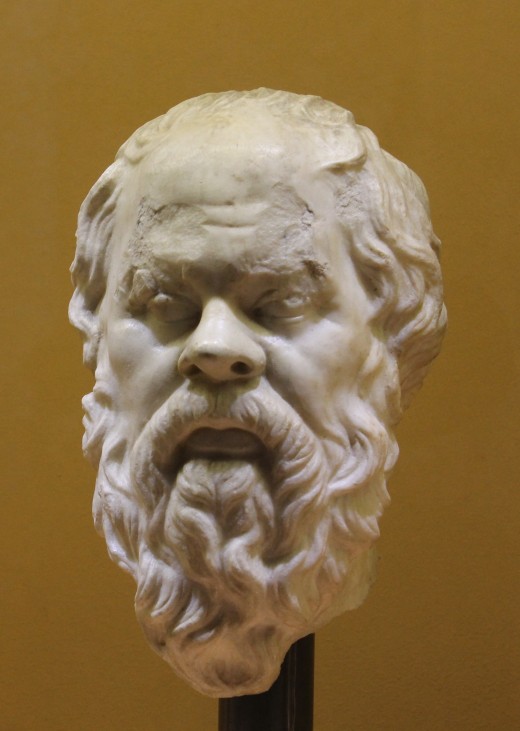
Museum
Displays in the Colosseum include ancient sculptures, pictures and artefacts.
Pompeii man
Excavations in 2006 at tower 9 of the walls of Pompeii revealed a complete skeleton of an adult man who died trying to escape the eruption of Vesuvius in AD79. These shackles from around his ankles indicate he was a slave.
Socrates
Wealthy Roman children were sent to Athens in Greece for their education. There they studied the ancient Greek philosophers and, upon return, decorated their homes with portraits and sculptures of philosophers such as Socrates. This marble relief dates from the mid first century AD.
Ankle shankles from Pompeii slave
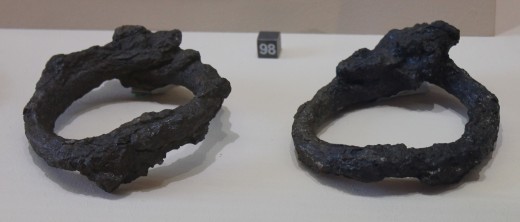
Reforming slavery
Ancient Greek and Roman civilisations were both reliant upon slavery for manual labour. Roman armies captured many foreign slaves and walked them back to Rome to be put to work. The huge numbers of slaves, outnumbering the free citizens, meant that repression was severe in order to reduce the risk of the slaves mounting rebellions.
Unlike Greek slaves, Roman masters could free their slaves in return for faithful service. The freed slave became a semi-citizen who were motivated and enterprising. Their children became citizens. Slaves from many countries became integrated into Roman culture.
FACT BOX
The easiest admission which allows you to avoid waiting in the sometimes very long queues at the Colosseum is to pre-purchase a Rome Pass which permits entry to two of Rome's museums or archeological sites.The pass is €30 (Increasing to €34 from 1 May 2013.)
The pass also provides cheaper entry to other museums and archaeological sites in Rome and free use of trains, the underground train service (metro) and local buses in Rome.
Accommodation
The Catholic church in Australia has established a 'house' for visitors from Australia and other countries.
Domus Australia was renovated in 2011 and is located in the 'old city'.
Address: Via Cernaia 14/B - 00185 - Rome, Italy
Telephone: +39 06 488 8781.
© 2013 Amanda Gearing

